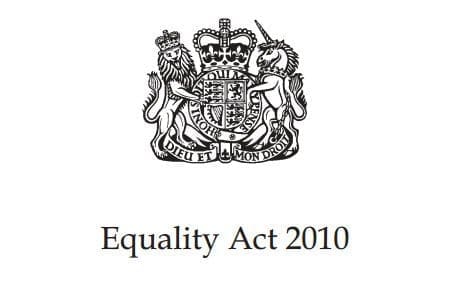Last updated: 20 September 2024
Redundancy – Consultations and appeals
Collective consultations
Consulting employees affected by redundancy is always good practice and is a requirement if 20 or more employees are affected.
If an employer has an already agreed procedure, such as with a trade union, this must be followed unless you can show reasonable reasons for not doing so. If you recognise a union or there are elected employee representatives in your organisation it is best practice to consult them about the selection criteria.
Conducting an Equality Impact Assessment is also a good idea to assess if disabled people (or any other category of employee) are going to be disproportionately impacted by the decisions made.
Redundancies of 20 employees or more
If an employer proposes to make more than twenty employees redundant within 90 days, it must consult ‘appropriate representatives’ of employees ‘affected’ by the proposed redundancies. Remember that those ‘affected’ by the redundancies may include people who are not themselves at risk of redundancy. The duty to consult is triggered even if you can find alternative employment for some of those affected and so will in fact make fewer than 20 people redundant. Consultation regulations are complex so do take legal advice before proceeding.
The pool for selection
Consultation with the union and/or other elected representatives as well as disability and other networks will help to identify the pool of employees from which redundancies will be made.
If other employees do jobs that are the same or similar in other departments or areas of the business, you should consider widening the redundancy pool to include these employees.
Consultation process
Most employers prefer to conduct the consultation process in person with face-to-face meetings. However, this might not be possible if your place of business is not open. Even if your premises are open, some older and disabled employees might not be able to travel into the workplace because they have been advised to avoid public transport or are shielding or are particularly susceptible to infection.
You will need to ensure that you can conduct consultations with employees that you cannot meet in person in a fair and accessible way. This will probably mean by way of a remote meeting platform such as Zoom or Microsoft Teams. You will need to ensure that whatever platform you use for the meeting is accessible to all the employees being consulted including for example employees with sight or hearing loss, dyslexia, autism or other neurodiverse conditions. Our ‘User’s guide to video conferencing apps‘ has more information.
It is good practice to tell the employee in advance how the meeting will be structured and the platform that you are planning on using. Check with them in advance that the meeting platform works for them and ensure adjustments are made such as enabling either automatic captioning or booking a sign language interpreter or an external speech to text provider to caption the meeting.
Individual consultation

It is vital to consult employees provisionally selected for redundancy individually. Failure to do this is likely to lead to any subsequent dismissals being found to be unfair.
As with collective consultations, you must ensure that reasonable adjustments are made for disabled employees to the individual consultation process. This may include:
- Ensuring that meetings are accessible. This might have to be a remote meeting via the platform that suits the person being consulted best. Remember to book a speech to text captioner if necessary and ensure the person can understand fully what is happening.
- Ensuring if the meeting is face to face that the chosen venue is both accessible itself and can be reached safely. Book times that suit the employee and allow for breaks.
- Booking sign language interpretation for face to face or virtual meetings. Remember that interpreters need to be booked in advance and might need to provide their services remotely via a screen
- Providing written information such as the selection criteria in alternative formats; for example, large print, electronically, or in Easy Read.
- Allowing employees to be accompanied by a support worker or family member at both virtual and face to face meetings. It is usual to allow employees to be accompanied by a recognised Trade Union representative or a work colleague. However, it might be a reasonable adjustment for a disabled employee to allow them to be accompanied by a family member who provides them with emotional or physical support. In such situations the family member representative’s role should be clearly highlighted to both the employee and their representative. These can be difficult and emotional conversations so it is important to make clear that any disruption or behaviours that fall outside of the representative’s defined role could allow for the chair to reasonably ask the representative to leave the meeting or adjourn to find an alternative representative to support the employee.
Letter of invitation
Employees provisionally selected for redundancy should be invited by letter to a meeting. Ensure that the letter is in a format that the employee can access securely and that it has been received by the employee. This is true for letters sent both physically in the post and electronically – for example, via email.
The letter should explain the circumstances that have led to the need to make redundancies. For example, that the organisation is downsizing or closing a particular office or site. You should also provide the employee with the selection criteria used that has led to them being provisionally selected for redundancy and their score on the redundancy matrix. The letter should, however, make it clear that the employee is only being considered for redundancy at this stage. It should not give the impression that the decision has already been made.
The letter should state the date, place/format and time of the proposed meeting with the employee. Remember, however, to give the employee the opportunity to ask for changes to be made to these if required as reasonable adjustments. There is no legal right for the employee to be accompanied to this meeting however it is good practice for employers to allow employees to be accompanied at meetings under their redundancy procedure, as it demonstrates an intention to act fairly. The letter should state whether or not you are allowing the employee to be accompanied.
Consultation meeting
The consultation meeting should not take place until at least a few days after the employee has been given the letter inviting them to the meeting. You must explain to each employee why they have been provisionally selected for redundancy and give them the opportunity to ask questions and put forward alternatives to redundancy. These must be considered seriously, which may entail looking at the points raised in more detail and holding a second meeting.
Decision to dismiss
Notice of termination of contracts should only be given after individual consultations have taken place and if no alternatives to redundancy can be identified. The decision to dismiss the employee as redundant should be communicated in writing (or the alternative format required) and the employee must be told of their right to appeal and the process for doing so.
Appeals
If an employee wishes to appeal against the decision to terminate their contract, they should be invited to a further appeal meeting. Ensure that you take particular note of an employee’s assertions that the decision to make them redundant is discriminatory on any ground. These assertions must be investigated.
If the allegation made is that the redundancy process was not accessible, i.e. reasonable adjustments were not made for a disabled employee, try to ensure that this is rectified by going through the process again. This may mean providing information in alternative formats or holding meetings once again.
Allegations that the redundancy criteria or the scoring system were discriminatory may take longer to investigate and you may need to take legal advice.
The final decision of an appeal must be given to the employee in writing (or the alternative format required).
Notice
Employees who are selected for redundancy are entitled to be given notice of the employer’s intention to terminate their contract. This should either be the notice period specified in the employee’s contract of employment or a ‘reasonable period’. This must not be less than the statutory minimum which is one week for an employee who has worked for more than one month but less than two years. After two years a week’s notice must be given for every year worked up to a maximum of twelve weeks.
If an employee who has been made redundant wishes to leave before the end of their notice period, perhaps because they have found another job, they must serve a counter notice on the employer. If you agree to the employee leaving early, they will still be entitled to their redundancy pay.
If you do not want the employee to leave early, you must write to them asking them to withdraw their counter notice and continue working until the end of their notice period. If the employee refuses you can refuse to pay statutory redundancy pay, but the employee can in this situation apply for an employment tribunal to decide if it would have been just and equitable for the employer to have paid them statutory redundancy pay. The tribunal will consider why the employee wanted to leave and why the employer wanted them to remain.
Time off to look for new employment
Employees who have worked for you continuously for two years or more and have been given notice of dismissal because of redundancy are entitled to reasonable paid time off to:
- Look for a new job.
- Make arrangements for training.
- Attend interviews.
- Have a meeting with a jobcentre or a recruitment agency.
You will need to agree with the employee what is reasonable in the circumstances. Bear in mind that it might take longer for a disabled employee to do any or all of these, especially if they have access requirements or need information in an alternative format. It would be a reasonable adjustment to allow such an employee more time than you might someone without their disability. Tribunals can make awards against employers who unreasonably refuse to allow employees paid time off. A disabled employee refused the time may also have a claim for disability discrimination.
If you require this content in a different format, contact enquiries@businessdisabilityforum.org.uk.
© This resource and the information contained therein are subject to copyright and remain the property of the Business Disability Forum. They are for reference only and must not be copied or distributed without prior permission.

